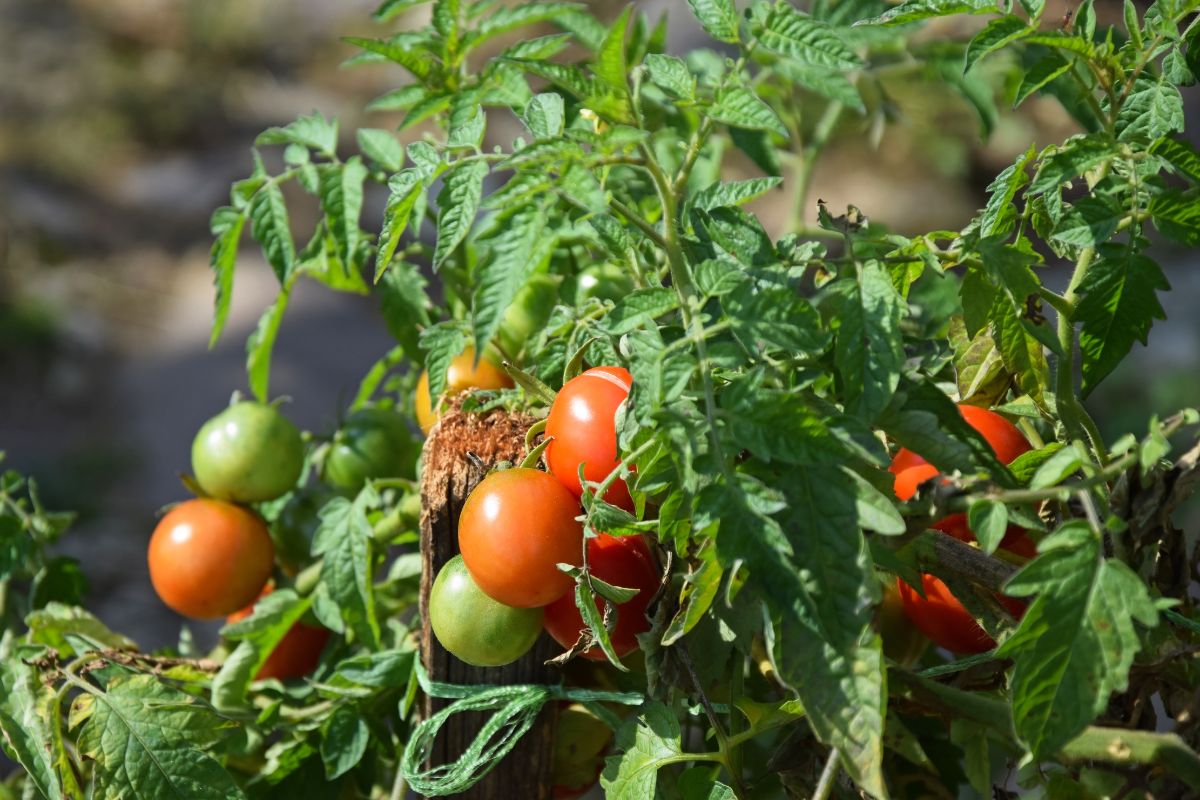Show table of content Hide table of content
- Tomatoes without traditional stakes: a small revolution in the vegetable garden
- The suspended trellising method: how does it work?
- Why is this system ideal for saving space?
- Equipment required: simple, economical and durable
- A few tips for successful hanging baskets
- An ideal solution for greenhouses and tunnels too
- And aesthetics?
- The cleverest space-saving tip of the summer
What if your tomatoes could grow taller without taking up too much of the ground? Forget about traditional stakes that clutter up your paths or fall over in the first gust of wind. There’s now an ingenious alternative that’s aesthetically pleasing, practical and ultra-efficient for growing tomatoes even in small spaces. Are you ready to transform your kitchen garden? Follow the guide!
Tomatoes without traditional stakes: a small revolution in the vegetable garden
A wooden or metal stake, planted vertically beside each tomato plant, has long been the most common method. However, this technique has its limits. It requires space on the ground, needs to be well anchored, and requires constant monitoring to prevent the stalks from bending or breaking. But there is a solution that saves space, provides optimum support and is easy to maintain: horizontal or suspended trellising, also known as rope culture or suspended trellis culture. This system comes from greenhouse cultivation and is perfectly suited to urban gardens and balcony vegetable patches.
The suspended trellising method: how does it work?
Instead of staking your plants vertically with a stick, you can guide their growth along a wire stretched horizontally or suspended from a higher structure. Here’s how it works:
Garden All good gardeners do this simple action to prevent aphids on rose bushes.
- A strong wire is attached high up (to a pergola, arch, beam or even a simple wooden or metal frame).
- The main stem of the plant is wrapped around this wire as it grows, or attached with flexible clips.
- In this way, the plant climbs upwards, without the need for a rigid support, and develops its fruit without the risk of collapsing.
This system is particularly effective for indeterminate-growth tomatoes, which can reach heights of up to two metres.
Why is this system ideal for saving space?
One of the greatest advantages of this technique is that it optimises space. Your plants grow upwards, freeing up space on the ground for other crops or for easier movement. This means you can grow plants more densely, especially on small surfaces such as a balcony, terrace or raised mini-garden. What’s more, air circulation is improved, reducing the risk of diseases such as mildew. Harvesting also becomes easier: the bunches hang at eye level, ready to be picked without effort.
Equipment required: simple, economical and durable
This system does not require any major investment. Here’s what you need:
- A sturdy support (wooden or metal structure, arch, greenhouse, etc.)
- Horticultural wire, coconut twine or braided rope
- Flexible clamps or rubber rings to secure the stem Possibly a trellis to help the first branches grow.
The material can be reused from one year to the next, making it a sustainable and cost-effective solution.
Garden A simple cup at the base of your raspberry bushes – your harvest will double.
A few tips for successful hanging baskets
Every system has its tricks! Here are the ones to remember for a successful hanging crop:
- Prune your tomatoes regularly to prevent tangling.
- Guide the main stem every week, without overtightening the ties.
- Make sure the wire is taut and firmly attached.
- Keep an eye on watering: when grown vertically, they can dry out more quickly, especially in pots.
Above all, don’t wait too long to install your system. It’s better to have it in place as soon as you plant so that the plants can adapt naturally.
An ideal solution for greenhouses and tunnels too
This system has already been used for a long time in professional greenhouse cultivation, proving its effectiveness. If you have a greenhouse, simply install wires suspended from the roof structure: your plants will climb freely, while being perfectly ventilated and accessible.
And aesthetics?
Another advantage, often overlooked: the visual effect is superb. Imagine an arch covered in foliage and ripe tomatoes, a living green wall at the heart of your garden or balcony. This hanging crop becomes a truly edible decorative element!
Garden Why removing ivy from trees and facades could be the worst thing to do.
The cleverest space-saving tip of the summer
No more wobbly stakes or tight rows: hanging or horizontal trellising transforms the way you grow your tomatoes. More space, less disease, easier maintenance and a bountiful harvest… It’s a technique you’ll want to adopt this season!


